
 (732) 246-1377
(732) 246-1377
 (732) 246-1377
(732) 246-1377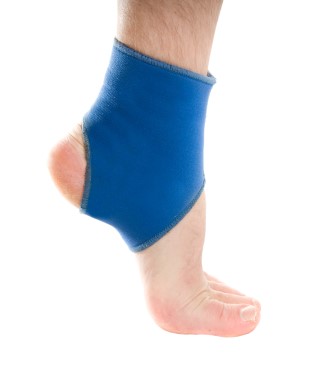 Jae Crowder of the Boston Celtics had an MRI for the sprained ankle injury he sustained in the game against the Houston Rockets. Crowder suffered a fall with about 9 minutes in the third quarter remaining and was not able to get back up. Crowder headed to the locker room with team trainer Ed Lacerte and had his injury diagnosed as a sprained ankle. He was unable to return to the game.
Jae Crowder of the Boston Celtics had an MRI for the sprained ankle injury he sustained in the game against the Houston Rockets. Crowder suffered a fall with about 9 minutes in the third quarter remaining and was not able to get back up. Crowder headed to the locker room with team trainer Ed Lacerte and had his injury diagnosed as a sprained ankle. He was unable to return to the game.
Ankle sprains are common, but need immediate attention.If you have any concerns about your feet or ankles, contact one of our podiatrists of Livingston Footcare. Our doctors will treat your foot and ankle needs.
How Does an Ankle Sprain Occur?
Ankle sprains take place when the ligaments in your ankle are torn or stretched beyond their limits. There are multiple ways that the ankle can become injured, including twisting or rolling over onto your ankle, putting undue stress on it, or causing trauma to the ankle itself.
What are the Symptoms?
● Mild to moderate bruising
● Limited mobility
● Swelling
● Discoloration of the skin (depending on severity)
Preventing a Sprain
● Wearing appropriate shoes for the occasion
● Stretching before exercises and sports
● Knowing your limits can aid in prevention
Treatment of a Sprain
Treatment of a sprain depends on the severity. Many times, people are told to rest and remain off their feet completely, while others are given an air cast. If the sprain is very severe, surgery may be required.
If you have suffered an ankle sprain previously, you may want to consider additional support such as a brace and regular exercises to strengthen the ankle.
If you have any questions feel free to contact our office located in North Brunswick, NJ. We offer the newest diagnostic tools and technologies to fit your foot and ankle needs.
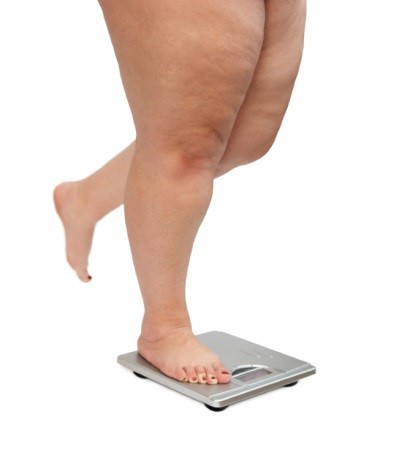 According to the World Health Organization (WHO), “about 1.2 billion people worldwide are officially classified as overweight.” The top offending countries in this category include India, the U.S., and China. Not only is obesity extremely unhealthy, but it can cause many different chronic health problems if not addressed properly. Obesity can lead to problems such as infertility and pregnancy complications in women, as well as hormonal imbalances. Solutions to address obesity include preparing weight loss programs, changing your diet, moving around often, quitting smoking and drinking, and seeing your doctor.
According to the World Health Organization (WHO), “about 1.2 billion people worldwide are officially classified as overweight.” The top offending countries in this category include India, the U.S., and China. Not only is obesity extremely unhealthy, but it can cause many different chronic health problems if not addressed properly. Obesity can lead to problems such as infertility and pregnancy complications in women, as well as hormonal imbalances. Solutions to address obesity include preparing weight loss programs, changing your diet, moving around often, quitting smoking and drinking, and seeing your doctor.
Any additional problems in the feet of those with obesity can be detrimental to foot health. If you have any concerns, contact one of our podiatrists of Livingston Footcare. Our doctors will treat your foot and ankle needs.
Obesity and your Feet
Since your feet are what support your entire weight when standing, any additional weight can result in pain and swelling. Being overweight is one of the main contributors to foot complications.
Problems & Complications
Extra Weight – Even putting on just a few extra pounds could create serious complications for your feet. As your weight increases, your balance and body will shift, creating new stresses on your feet. This uneven weight distribution can cause pain, even while doing the simplest tasks, such as walking.
Diabetes – People who are overweight are at serious risk of developing type-2 diabetes, which has a drastic impact on the health of your feet. As you get older, your diabetes might worsen, which could lead to loss of feeling in your feet, sores, and bruises. You could also become more prone to various infections.
Solutions
Footwear – Specially made footwear that supports your joints, arches, and ankles, and allows room for good circulation is a great option to mitigate pressure and pain. A podiatrist will help you decide what works best for your specific needs.
Exercise – Exercise will help alleviate the pain and give your feet the strength it needs to support your body. Exercise also increases blood flow to your feet, allowing them to remain healthy and strong.
Most importantly, seek the help of a podiatrist for foot care if something is wrong or doesn’t seem to be working. A podiatrist will help you with any questions or information needed.
If you have any questions feel free to contact our office located in North Brunswick, NJ. We offer the newest diagnostic tools and technologies to fit your foot and ankle needs.
Gaining weight can happen suddenly and at any time. Usually you won’t notice the extra weight until your feet start hurting at the end of the day. This happens as your feet begin adjusting to carrying more weight. Foot swelling and pain are two of the biggest side effects of having gained weight.
Many foot-related problems can occur even after just putting on a few pounds. This includes the body ‘compensating’ by changing the way it moves. You may find yourself putting extra weight on the wrong parts of your feet and even leaning forward a bit. Your feet were designed to carry a healthy, normal body weight. Extra weight places undue stress on them.
Being overweight often causes the development of Type-2 diabetes, causing leg and foot pain. Older people who do not attempt to control their condition can even lose sensation and feeling in their legs and feet. This can lead to the development of small sores that can lead to serious infection.
Extra stress placed on the joints, tendons and muscles in the feet as a result of extra body weight may also cause heel spurs, or plantar fasciitis. Plantar fasciitis is an inflammation of the foot tissue, causing stiffness and pain when walking and climbing stairs. This can usually be relieved by foot stretches and custom made orthotic shoe-inserts.
Problems in the feet triggered by obesity can be treated by paying special attention to footwear. Proper support shoes that allow for good circulation, especially in the arch and ankle, are vital. A podiatrist can help you find what sort of shoe is most suitable for your feet. They can also measure you for special orthotics if necessary.
It could also be high time to start losing weight in order to treat and prevent diabetes as well as other life threatening diseases. Some methods include yoga and water aerobics, which benefit your entire body without placing stress on your feet. Don’t risk losing your feet by losing interest in them. Take care of your feet and your body, as they deserve the very best.
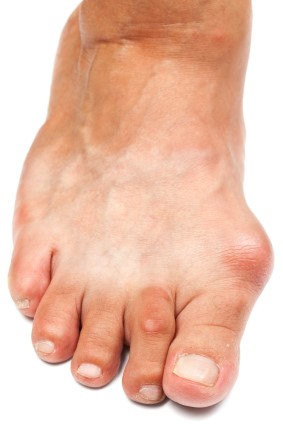 Bunions are known as a common ailment on the feet, described as being a bump alongside the big toe joint. Bunions occur when the metatarsal starts shifting toward the smaller toes. Although bunions can occur at any age, many different factors can cause them. Bunions can be inherited or caused by ill-fitting tight shoes such as high heels. One common solution for bunions is putting arch support pads or orthotics in your footwear. If your bunion condition is severe, consider anti-inflammatory medications with the permission of your podiatrist.
Bunions are known as a common ailment on the feet, described as being a bump alongside the big toe joint. Bunions occur when the metatarsal starts shifting toward the smaller toes. Although bunions can occur at any age, many different factors can cause them. Bunions can be inherited or caused by ill-fitting tight shoes such as high heels. One common solution for bunions is putting arch support pads or orthotics in your footwear. If your bunion condition is severe, consider anti-inflammatory medications with the permission of your podiatrist.
Bunion surgery usually occurs after non-surgical methods have proved to be ineffective. If you have any concerns, contact one of our podiatrists of Livingston Footcare. Our doctors will treat your foot and ankle needs.
What is a Bunion?
A bunion is formed of swollen tissue or an enlargement of boney growth, usually located at the base joint of the toe that connects to the foot. The swelling occurs by the bones in the big toe shifting inward, which impacts the other toes of the foot. This causes the area around the base of the big toe to become inflamed and painful.
Why do Bunions Form?
· Genetics – susceptibility to bunions are often hereditary
· Stress on the feet – poorly fitted and uncomfortable footwear that places stress on feet, such as heels, can cause bunions to form
How are Bunions Diagnosed?
Doctors often perform two tests – blood tests and x-rays – when trying to diagnose bunions, especially in the early stages of development. Blood tests help determine if the foot pain is being caused by something else, such as arthritis, while x-rays provide a clear picture of your bone structure to your doctor.
How are Bunions Treated?
· Refrain from wearing heels or similar shoes that cause discomfort
· Select wider shoes that can provide more comfort and reduce pain
· Anti-inflammatory and pain management drugs
· Orthotics or foot inserts
· Surgery
If you have any questions feel free to contact our office located in North Brunswick, NJ. We offer the newest diagnostic tools and technologies to fit your foot and ankle needs.
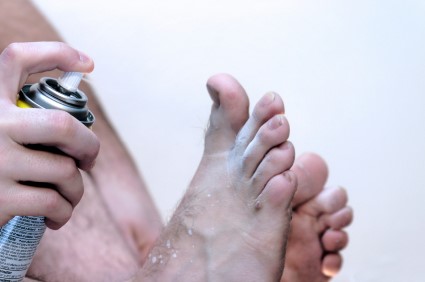 Garlic may be one potential remedy to treat foot conditions like athlete’s foot. A New York Times article suggests that garlic cloves that are finely crushed and steeped in water can offer a solution as an antifungal treatment. Athlete’s foot is caused by walking barefoot on contaminated wet surfaces and is characterized by cracked toes.
Garlic may be one potential remedy to treat foot conditions like athlete’s foot. A New York Times article suggests that garlic cloves that are finely crushed and steeped in water can offer a solution as an antifungal treatment. Athlete’s foot is caused by walking barefoot on contaminated wet surfaces and is characterized by cracked toes.
Athlete’s foot is an inconvenient condition that can be easily reduced with the proper treatment. If you have any concerns about your feet and ankles contact one of our podiatrists of Livingston Footcare. Our doctors will treat your foot and ankle needs.
Athlete’s Foot: The Sole Story
Athlete's foot, also known as tinea pedis, can be an extremely contagious foot infection. It is commonly contracted in public changing areas and bathrooms, dormitory style living quarters, around locker rooms and public swimming pools, or anywhere your feet often come into contact with other people.
Solutions to Combat Athlete’s Foot
· Hydrate your feet by using lotion
· Exfoliate
· Buff off nails
· Use of anti-fungal products
· Examine your feet and visit your doctor if any suspicious blisters or cuts develop
Athlete’s foot can cause many irritating symptoms such as dry and flaking skin, itching, and redness. Some more severe symptoms can include bleeding and cracked skin, intense itching and burning and even pain when walking. In the worst cases, athlete’s foot can cause blistering as well. Speak to your podiatrist for a better understanding of the different causes of athlete’s foot, as well as helping you figure out which treatment options are best for you.
If you have any questions feel free to contact our office located in North Brunswick, NJ. We offer the newest diagnostic tools and technologies to fit your foot and ankle needs.
Athlete’s foot is an extremely contagious infection caused by a fungus that results in itching, burning, dry, and flaking feet. The fungus that causes athlete’s foot is known as tinea pedis and thrives in moist, dark areas such as shower floors, gyms, socks and shoes, commons areas, public changing areas, bathrooms, dormitory style houses, locker rooms, and public swimming pools. Athlete’s foot is difficult to treat as well because of the highly contagious and recurrent nature of the fungus.
Tinea is the same fungus that causes ringworm, and is spread by direct contact with an infected body part, contaminated clothing, or by touching other objects and body parts that have been exposed to the fungus. Because the feet are an ideal place for tinea to grow and spread, this is the most commonly affected area. It is, however, known to grow in other places. The term athlete’s foot describes tinea that grows strictly on the feet.
The most commonly infected body parts are the hands, groin, and scalp, as well as the feet. Around 70% of the population suffer from tinea infections at some point in their lives, however not all of these cases are athlete’s foot. Just like any other ailment, some people are more likely to get it than others, such as people with a history of tinea infections or other skin infections, both recurring and non-recurring ones. The extent to which a person experiences regrowth and recurrent tinea infections varies from person to person.
Sometimes people will not even know that they are infected with tinea or that they have athlete’s foot because of a lack of symptoms. However, most experience mild to moderate flaking, itching, redness, and burning. However, some of the more severe symptoms include cracking and bleeding skin, intense itching and burning, pain while walking or standing, and even blistering.
Because of the recurring nature of the tinea fungus and the athlete’s foot it causes, the best way to treat this condition is with prevention. You can take some preventative measures such as wearing flip flops or sandals in locker rooms and public showers to reduce contact with the floor. It also helps to keep clean, dry feet while allowing them to breathe. Using powders to keep your feet dry is a good idea, as well as keeping your feet exposed to light and cool air, to prevent the growth of tinea. If you do happen to get athlete’s foot, opt for using topical medicated creams, ointments or sprays. These treatments help eliminate and prevent it from coming back.
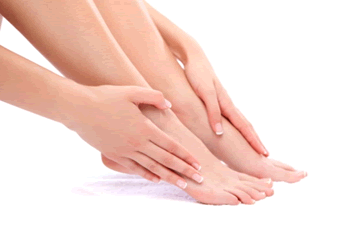 Your feet take you everywhere, making it very important that we take special care of them; this is especially true for diabetics. Many general practitioners warn that foot ailments can become extremely problematic if not treated properly. For diabetic patients nerve damage can occur, leaving them without feeling. This can be an issue if there are any cuts or sores on the feet that need special treatment. Diabetics must pay special attention to their feet regularly to avoid serious damage.
Your feet take you everywhere, making it very important that we take special care of them; this is especially true for diabetics. Many general practitioners warn that foot ailments can become extremely problematic if not treated properly. For diabetic patients nerve damage can occur, leaving them without feeling. This can be an issue if there are any cuts or sores on the feet that need special treatment. Diabetics must pay special attention to their feet regularly to avoid serious damage.
Diabetic foot care is important in preventing foot ailments such as ulcers. If you are seeking treatment, contact one of our podiatrists of Livingston Footcare. Our doctors will treat your foot and ankle needs.
Diabetic Foot Care
Diabetes affects millions of people every year. Diabetes can damage blood vessels in many parts of the body, including the feet. Because of this, taking care of your feet is essential if you have diabetes, and having a podiatrist help monitor your foot health is highly recommended.
The Importance of Caring for Your Feet
· Routinely inspect your feet for bruises or sores.
· Wear comfortable shoes that provide adequate support.
Patients with diabetes should have their doctor monitor their blood levels because blood sugar levels play such a huge role in diabetic care. Monitoring these levels on a regular basis is highly advised.
It is always best to inform your healthcare professional of any concerns you may have regarding your feet, especially for diabetic patients. Early treatment and routine foot examinations are keys to maintaining proper health, especially because severe complications can arise if proper treatment is not applied.
If you have any questions feel free to contact our office located in North Brunswick, NJ. We offer the newest diagnostic tools and technologies to fit your foot and ankle needs.
Millions of people are affected by diabetes each year. Diabetes damages blood vessels in all parts of the body, especially the feet. The legs and feet may develop slow blood flow, which causes neuropathy, or nerve damage. Once a diabetic patient develops neuropathy, it is important that the feet are well taken care of. Otherwise, the lower limbs may have to be amputated. This only happens in drastic cases, but it shows how seriously diabetic foot care should be taken.
It is very important to always wash and dry the feet thoroughly, especially in between the toes, if you’re a diabetic. Secondly, examining your feet and toes for redness or sores must be done, even if you do not feel pain. You may also want to examine your feet from the bottom. Try to avoid wearing colored socks to prevent infections that may occur from the dye. Well-fitting socks are also highly recommended.
A diabetic’s physician should always monitor their blood levels to test how well blood sugars are being maintained. In addition to giving advice about everyday eating habits and foot care, a physician may prescribe medicine to help with the diabetic patient’s neuropathy. It is also advised to see a podiatrist if experiencing any feet conditions. Toenails may also need to be taken care of by a podiatrist. This prevents patients from cutting too deeply around their cuticles, which can lead to infection.
A person can take care of their feet at home by following the instructions of their physician. Using creams on one’s feet is also an effective way to heal dryness. Proceed with caution when using tools to remove calluses, as severe diabetics may not be able to feel pain on their feet. If any complications arise do not hesitate to contact a podiatrist.
On a daily basis, diabetic feet must be checked. If you are ever concerned about something, contact your health care professional. You never want to wait until a wound becomes too severe to treat. If left untreated, gangrene may develop. Gangrene is a serious infection that can lead to sepsis or amputation. It is also important for diabetics to be on the lookout for ulcers. Ulcers are sores that develop from tissue loss on the skin. They can be quite painful and require intensive treatment. Early treatment and everyday inspection are imperative to staying healthy.
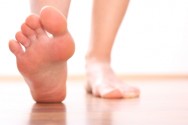 While sweating can be a good thing for the body, excessive sweating known as hyperhidrosis can become problematic. Hyperhidrosis occurs when the body excessively sweater more than what is necessary to regulate body temperature. A common occurrence in both males and females, hyperhidrosis can be caused because of medications and food supplements or can be inherited. Many of those suffering from the condition seek laser treatment as an option.
While sweating can be a good thing for the body, excessive sweating known as hyperhidrosis can become problematic. Hyperhidrosis occurs when the body excessively sweater more than what is necessary to regulate body temperature. A common occurrence in both males and females, hyperhidrosis can be caused because of medications and food supplements or can be inherited. Many of those suffering from the condition seek laser treatment as an option.
If you have any concerns, contact one of our podiatrists of Livingston Footcare. Our doctors will treat your foot and ankle needs.
Hyperhidrosis of the Feet
Hyperhidrosis is a rare disorder that can cause people to have excessive sweating of their feet. This can usually occur all on its own without rigorous activity involved. People who suffer from hyperhidrosis may also experience sweaty palms.
Although it is said that sweating is a healthy process meant to cool down the body temperature and to maintain a proper internal temperature, hyperhidrosis may prove to be a huge hindrance on a person’s everyday life.
Plantar hyperhidrosis is considered to be the main form of hyperhidrosis. Secondary hyperhidrosis can refer to sweating that occurs in areas other than the feet or hands and armpits. Often this may be a sign of it being related to another medical condition such as menopause, hyperthyroidism and even Parkinson’s disease.
In order to alleviate this condition, it is important to see your doctor so that they may prescribe the necessary medications so that you can begin to live a normal life again. If this is left untreated, it is said that it will persist throughout an individual’s life.
A last resort approach would be surgery, but it is best to speak with your doctor to find out what may be the best treatment for you.
If you have any questions feel free to contact our office located in North Brunswick, NJ. We offer the newest diagnostic tools and technologies to fit your foot and ankle needs.
 Plantar fasciitis is a condition in which a ligament of the foot, called the plantar fasciia, becomes inflamed and irritated, causing pain throughout the foot and heel. Plantar fasciitis is known to commonly affect those who have high arches and flat feet. Those who have these particular conditions generally have an abnormal foot structure and gait, resulting in a higher risk of injuring the plantar fasciia. Treatment options for the condition involve anti-inflammatory medicines and at-home remedies like icing your heel.
Plantar fasciitis is a condition in which a ligament of the foot, called the plantar fasciia, becomes inflamed and irritated, causing pain throughout the foot and heel. Plantar fasciitis is known to commonly affect those who have high arches and flat feet. Those who have these particular conditions generally have an abnormal foot structure and gait, resulting in a higher risk of injuring the plantar fasciia. Treatment options for the condition involve anti-inflammatory medicines and at-home remedies like icing your heel.
Plantar fasciitis can be very painful and inconvenient. If you are experiencing heel pain or symptoms of plantar fasciitis, contact one of our podiatrists of Livingston Footcare. Our doctors will treat your foot and ankle needs.
What is Plantar Fasciitis?
Plantar fasciitis is the inflammation of the thick band of tissue that runs along the bottom of your foot, known as the plantar fascia, and causes mild to severe heel pain.
What Causes Plantar Fasciitis?
· Excessive running
· Non-supportive shoes
· Overpronation
· Repeated stretching and tearing of the plantar fascia
How Can It Be Treated?
· Conservative measures – anti-inflammatories, ice packs, stretching exercises, physical therapy, orthotic devices
· Shockwave therapy – sound waves are sent to the affected area to facilitate healing and are usually used for chronic cases of plantar fasciitis
· Surgery – usually only used as a last resort when all else fails. The plantar fascia can be surgically detached from the heel
While very treatable, plantar fasciitis is definitely not something that should be ignored. Especially in severe cases, speaking to your doctor right away is highly recommended to avoid complications and severe heel pain. Your podiatrist can work with you to provide the appropriate treatment options tailored to your condition.
If you have any questions feel free to contact our office located in North Brunswick, NJ. We offer the newest diagnostic tools and technologies to fit your foot and ankle needs.